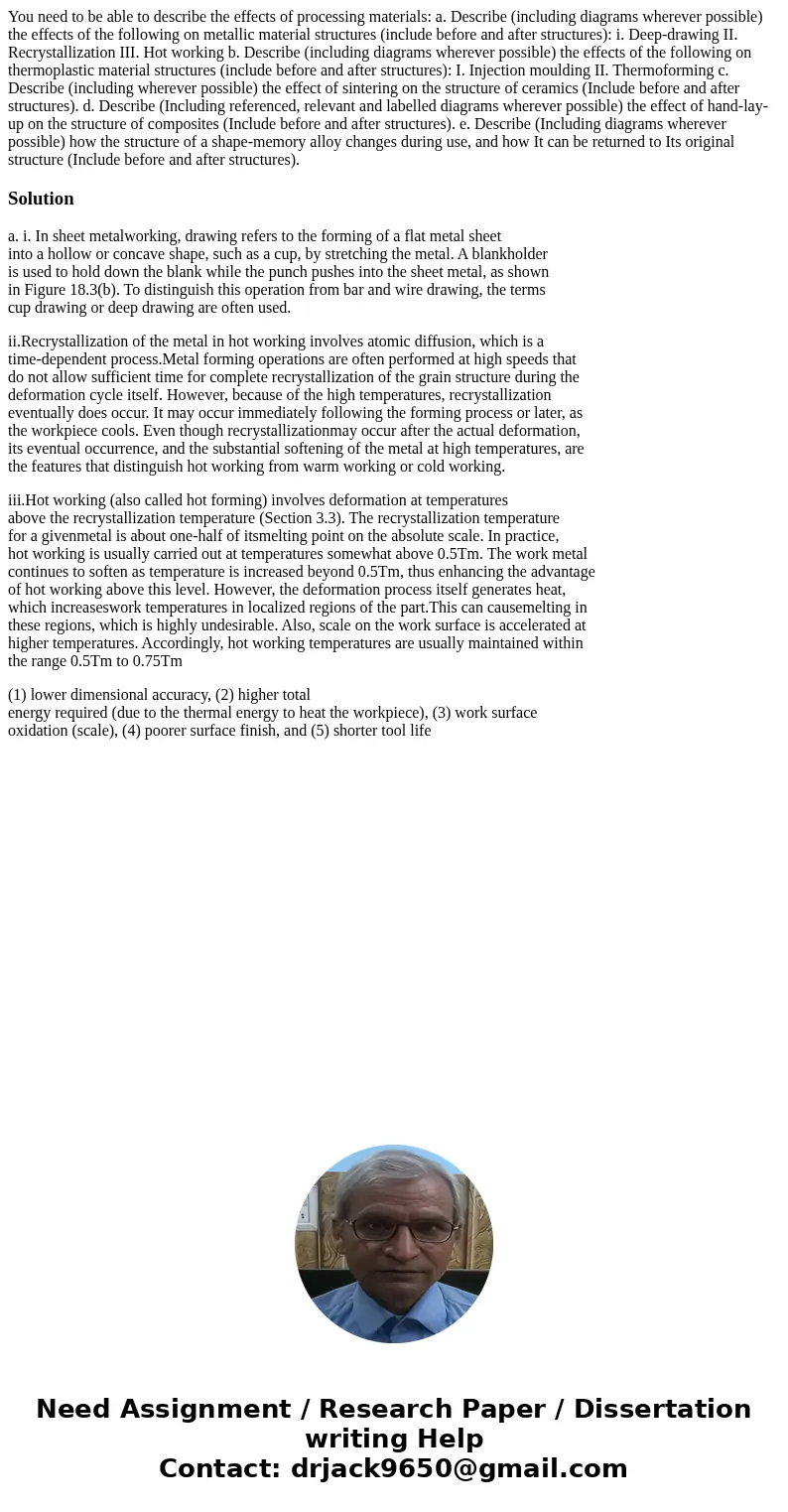You need to be able to describe the effects of processing ma
Solution
a. i. In sheet metalworking, drawing refers to the forming of a flat metal sheet
into a hollow or concave shape, such as a cup, by stretching the metal. A blankholder
is used to hold down the blank while the punch pushes into the sheet metal, as shown
in Figure 18.3(b). To distinguish this operation from bar and wire drawing, the terms
cup drawing or deep drawing are often used.
ii.Recrystallization of the metal in hot working involves atomic diffusion, which is a
time-dependent process.Metal forming operations are often performed at high speeds that
do not allow sufficient time for complete recrystallization of the grain structure during the
deformation cycle itself. However, because of the high temperatures, recrystallization
eventually does occur. It may occur immediately following the forming process or later, as
the workpiece cools. Even though recrystallizationmay occur after the actual deformation,
its eventual occurrence, and the substantial softening of the metal at high temperatures, are
the features that distinguish hot working from warm working or cold working.
iii.Hot working (also called hot forming) involves deformation at temperatures
above the recrystallization temperature (Section 3.3). The recrystallization temperature
for a givenmetal is about one-half of itsmelting point on the absolute scale. In practice,
hot working is usually carried out at temperatures somewhat above 0.5Tm. The work metal
continues to soften as temperature is increased beyond 0.5Tm, thus enhancing the advantage
of hot working above this level. However, the deformation process itself generates heat,
which increaseswork temperatures in localized regions of the part.This can causemelting in
these regions, which is highly undesirable. Also, scale on the work surface is accelerated at
higher temperatures. Accordingly, hot working temperatures are usually maintained within
the range 0.5Tm to 0.75Tm
(1) lower dimensional accuracy, (2) higher total
energy required (due to the thermal energy to heat the workpiece), (3) work surface
oxidation (scale), (4) poorer surface finish, and (5) shorter tool life

 Homework Sourse
Homework Sourse